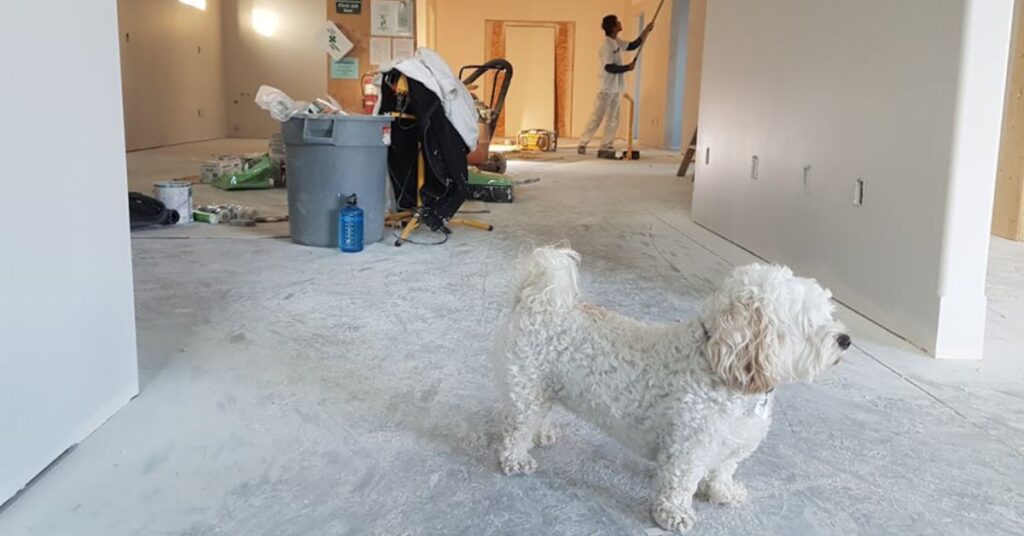Illinois is known for its diverse weather, from hot summers to cold winters, making home maintenance an essential task for residents. Homes in the state often face challenges like temperature fluctuations and wear from seasonal conditions. To keep a home comfortable, functional, and visually appealing, thoughtful improvements are necessary. Whether you’re planning to modernize your space, improve energy efficiency, or increase your property value, this guide will help you navigate the process.
Planning Your Home Improvement Project
A successful home improvement project begins with careful planning. First, identify your goals. Are you looking to update the aesthetics, improve functionality, or address structural issues? Knowing your purpose will help you focus on what’s most important.
Start by assessing your home’s condition. Walk through each room and take note of areas that need repairs, upgrades, or cosmetic changes. Some common improvement areas include updating kitchens, remodeling bathrooms, or fixing outdated windows. Prioritize issues that affect safety or energy efficiency, such as leaky roofs or poorly insulated spaces.
Establish a realistic budget early in the planning process. Research the costs of materials, labor, and any required permits. If you’re on a tight budget, focus on high-impact projects that provide significant value. Simple changes like fresh paint, updated lighting, or new flooring can refresh a space without major expenses.
Windows and Doors
Windows and doors play a critical role in energy efficiency, security, and aesthetics. Old or damaged windows can cause drafts, higher energy bills, and reduced comfort. Replacing them is a smart investment for long-term savings and improved insulation. For Illinois homeowners, energy-efficient windows can help maintain comfortable indoor temperatures year-round.
Consider hiring a Naperville window company for your window replacement needs. Professional installers can recommend the best options for your home and handle the installation process efficiently. Upgrading to modern windows can also enhance the appearance of your home and boost its curb appeal.
Doors also deserve attention during home improvement projects. Replacing an old front door with a sturdy, modern option can improve security and make a great first impression. Sliding or French doors can be excellent choices for connecting indoor and outdoor spaces, adding functionality and style.
Kitchens and Bathrooms
Kitchens and bathrooms are among the most commonly upgraded spaces. These areas can significantly influence the functionality and value of a home. In kitchens, simple upgrades like replacing old countertops, updating cabinet hardware, or installing energy-efficient appliances can create a modern and functional space. If your budget allows, consider adding features like a kitchen island or new cabinetry to enhance storage and usability.
Bathrooms are another area where small changes can make a big difference. Replacing outdated fixtures, adding new tiles, or upgrading the shower can transform the space. Modern bathrooms are often designed with functionality and style in mind, offering a mix of comfort and convenience. Investing in upgrades here is especially worthwhile for homeowners planning to sell.
Living Areas and Bedrooms
Living areas and bedrooms are spaces where comfort and aesthetics go hand in hand. Simple improvements like fresh paint, updated flooring, or new lighting can completely change the feel of a room. For living rooms, consider adding built-in shelving or upgrading the furniture arrangement to improve functionality.
Bedrooms benefit from small changes that enhance comfort and organization. Installing custom closet systems, adding blackout curtains, or upgrading bedding can make a noticeable difference. For guest bedrooms, adding practical touches like extra storage or multifunctional furniture can improve the space without major renovations.
Cost-Saving Tips for Home Improvements
Home improvement projects can be expensive, but there are ways to keep costs under control while achieving great results. Begin by tackling DIY-friendly tasks. Painting walls, installing shelves, or replacing cabinet hardware are manageable projects for most homeowners.
Look for sales or discounts on materials and supplies. Many home improvement stores offer seasonal promotions or bulk pricing. Compare prices from different retailers to find the best deals. If you’re buying appliances or furniture, consider waiting for major sales events.
Reuse and repurpose materials when possible. Refinishing old furniture, using reclaimed wood, or updating existing fixtures can save money while adding character to your home. Thrift stores and salvage yards often have affordable options for unique decor pieces.
When hiring contractors, get multiple quotes to find the best value. Focus on finding professionals who offer quality work at a reasonable price. While it may be tempting to choose the lowest bid, prioritize experience and reliability to avoid costly mistakes later.
Plan your projects in phases if your budget doesn’t allow for everything at once. Completing one area at a time ensures you can allocate resources effectively and avoid overextending yourself financially.
Maintaining Your Home Improvements
Once your home improvements are complete, regular maintenance is essential to protect your investment. Routine care can extend the life of your upgrades and prevent costly repairs down the road.
For windows and doors, check seals and frames periodically to ensure they remain energy-efficient. Clean them regularly to prevent dirt buildup, which can affect their performance. If you’ve added new flooring, follow manufacturer recommendations for cleaning and maintenance to keep it looking its best.
Keep an eye on plumbing fixtures, electrical systems, and HVAC units. Address minor issues promptly to avoid larger problems. For example, a small leak in a faucet can lead to water damage if ignored.
Exterior improvements, like fresh paint or landscaping, also require upkeep. Inspect your home’s exterior for signs of wear, such as peeling paint or damaged siding. Regularly trimming trees and shrubs, cleaning gutters, and maintaining pathways can preserve your home’s curb appeal and functionality.
In conclusion, making effective home improvements involves careful planning, focusing on high-impact areas, and maintaining your upgrades over time. By prioritizing spaces like kitchens, bathrooms, and windows, you can enhance your home’s comfort, value, and appearance. Whether you’re tackling DIY projects or hiring professionals, thoughtful changes can create a lasting difference. For window replacements, consider hiring a Naperville Window Company to achieve durable and stylish results. With the right approach, your home improvement efforts will not only meet your needs but also stand the test of time.







